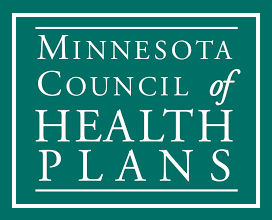Fighting the opioid epidemic
Minnesota’s health insurers, along with physicians, dentists, nurses, pharmacists, physical therapists, psychologists and others are working to prevent opioid death and addiction, and at the same time treat pain that stops Minnesotans from enjoying daily activities.
Prevent Death
Opioid overdoses caused 395 deaths and more than 2,000 hospitalizations and ER visits across Minnesota in 2016. Our members are helping prevent deaths by:
- Paying for Naloxone, which stops an overdose
- Lowering allowed doses to safer amounts
- Avoiding deadly drug combinations
- Flagging unusual prescription requests
- Ensuring people who get these medications have had major surgery, a serious injury, or have advanced cancer or are at the end of life
- Coordinating care for people diagnosed with substance abuse disorders
- Using disease management programs to educate people with chronic diseases
Prevent Addiction
Getting care based on science helps prevent addiction. An example: opioids may be the best treatment immediately after a surgery or serious injury but ongoing use is dangerous. When opioid treatment is more than 45 days, chances are 1 in 7 the person will still be taking opioids a year later. Our members are helping preventing addiction by:
- Following guidelines on the strength of doses
- Recommending frequent followup visits
- Using a prior approval process for specific medications and doses;
- Limiting the number of pills per prescription
- Flagging unusual situations such as multiple prescriptions from multiple doctors and requiring individuals get their care from one doctor, one pharmacy and one ER
- Encouraging e-prescribing so records are always up to date and chance for misuse is reduced
Treat Addiction
Minnesota’s health insurers have a long history of paying for treatment for individuals with addictions. Insurers commonly pay for treatment, including:
- Inpatient care
- Intensive outpatient or partial hospitalization care
- Care during rehabilitation
- Mental health therapy
- Addiction medicine specialists
- Screen pregnant women for addiction, provide care
- Provide intense care before and after birth for babies exposed to opioids during pregnancy
- Coordinated case management to treat underlying behavioral health issues
- Medications such as Suboxone, buprenorphine or methadone that assist treatment
Treat Pain
For many years all pain was treated with opioids. These pills were thought to be safe and effective. We now know that’s not true. Both physical and emotional pain involve the same area of the brain but require different types of treatment. Insurers pay to treat both physical and emotional pain through:
- Physical therapy and supervised exercising
- Mental health therapy
- Non-opioid pain medication
- Psychiatry
- Some policies may pay for treatments such as acupuncture or chiropractic care.
Help people who provide care
With more than 115 people dying from painkiller overdoses every day across the United States, information is needed to stop the epidemic. Data within health insurers’ systems help by:
- Ensuring doctors and nurses have up-to-date research on treating pain and preventing addiction
- Sharing data directly with individual doctors and nurses so they see what and how they prescribe compares to guidelines and their peers
- Flagging unusual frequent, high dose prescriptions
- Identifying doctors or nurses whose pattern of prescribing pain killers is a concern, doesn’t improve and requires official corrective action plans and re-evaluation
- Reporting people to Minnesota Board of Medical Practice when necessary
Minnesota opioid laws
Interested in Minnesota’s laws regarding opioids? This report from the state gives an overview of the state laws governing the prescribing, dispensing and disposal of opioids.
